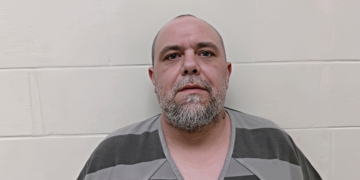Are addicts at higher risk from COVID-19? Scioto County fell victim to another pandemic long before Coronavirus: addiction. The devastation of our community by opioids has been documented nationally. While many have fought their way back to recovery, Scioto County remains the overdose capital of Ohio.
While 70 to 80% of those who get Coronavirus are expected to have mild symptoms, high-risk patients often require hospitalization and respiratory support. According to CDC guidelines, the elderly and those with chronic health conditions are considered high-risk patients for COVID-19.
But is addiction one of those chronic health conditions that makes you high risk? I contacted both the Office of Ohio Health Director Dr. Amy Acton and the Scioto County Health Department searching for answers. And I got them. Though at first glance, they seem to be different answers.
The Scioto County Health Department responded, “Those in active addiction are not considered to be at a higher risk than the general population unless they are elderly or have other health conditions.”
However, that same question posed to the Ohio Department of Health got this response from Megan Smith, “People who use opioids at high doses medically or who have OUD face separate challenges to their respiratory health.” Here’s why:
- Since opioids act in the brainstem to slow breathing, their use not only puts the user at risk of life-threatening or fatal overdose, it may also cause a harmful decrease in oxygen in the blood (hypoxemia).
- Lack of oxygen can be especially damaging to the brain; while brain cells can withstand short periods of low oxygen, they can suffer damage when this state persists.
- Chronic respiratory disease is already known to increase overdose mortality risk among people taking opioids, and thus diminished lung capacity from COVID-19 could similarly endanger this population.
And it’s not just opioid abuse that can cause a problem:
- A history of methamphetamine use may also put people at risk. Methamphetamine constricts the blood vessels, which is one of the properties that contribute to pulmonary damage and pulmonary hypertension in people who use it. Clinicians should be prepared to monitor the possible adverse effects of methamphetamine use, the prevalence of which is increasing in our country when treating those with COVID-19.
The medical consequences of drug abuse aside. The lifestyle fallout from addiction can increase COVID-19 risk.
- Poor access to healthcare
- Housing insecurity or homelessness
- Incarceration
All of these situations put addicts at higher risk from COVID-19. Even those in rehab facilities could be at higher-risk because they aren’t exactly designed for social distancing. This could be a difficult time to get help.
According to the Scioto County Health Department, procedures like medically supervised detox are considered elective and not permitted under Ohio’s ban of elective procedures. And many centers are no longer offering in-person counseling.
So, what’s being done to help addicts during this crisis? I’ll ask Scioto County officials and speak with an addiction counselor in part 2 of this article.























































































